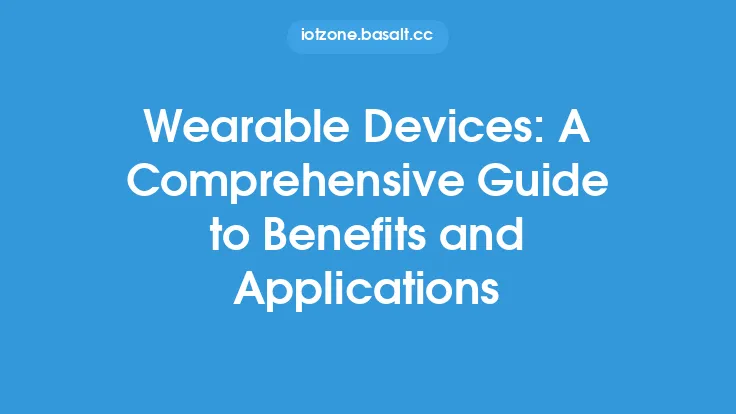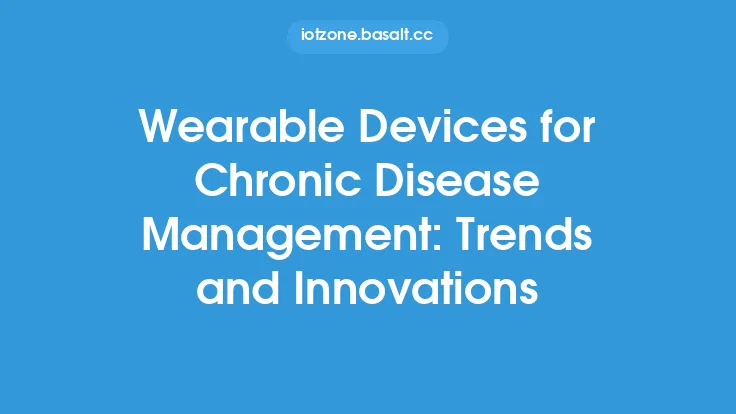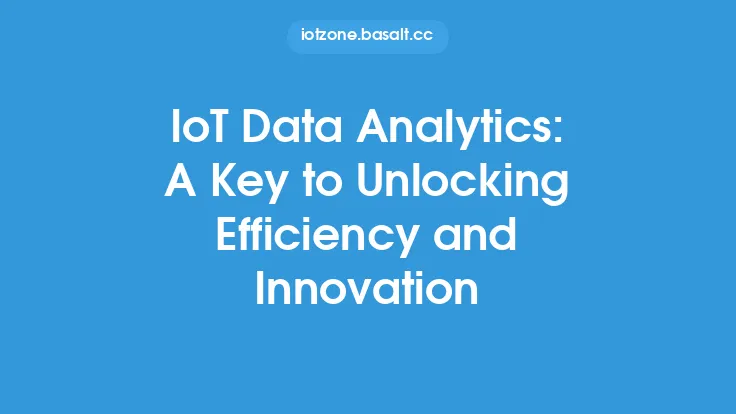The world of wearable devices has experienced tremendous growth over the past decade, with millions of people around the globe embracing these innovative gadgets. From fitness trackers and smartwatches to smart glasses and hearables, wearable devices have become an integral part of our daily lives. One of the key factors driving the popularity of wearable devices is their ability to collect and analyze vast amounts of data, providing users with valuable insights into their behavior, health, and lifestyle. In this article, we will delve into the world of wearable devices and data analytics, exploring the various ways in which these technologies are unlocking insights for improved living.
Introduction to Wearable Device Data Analytics
Wearable device data analytics refers to the process of collecting, analyzing, and interpreting data generated by wearable devices. This data can include a wide range of metrics, such as physical activity levels, sleep patterns, heart rate, and nutrition intake. By analyzing this data, users can gain a deeper understanding of their behavior and make informed decisions to improve their overall well-being. Wearable device data analytics involves several key steps, including data collection, data processing, and data visualization. Data collection involves gathering data from various sources, such as sensors, GPS, and user input. Data processing involves cleaning, transforming, and analyzing the collected data to extract meaningful insights. Finally, data visualization involves presenting the analyzed data in a clear and concise manner, using charts, graphs, and other visualizations to help users understand their data.
Types of Wearable Device Data
Wearable devices can collect a wide range of data, including physical activity data, biometric data, environmental data, and behavioral data. Physical activity data includes metrics such as step count, distance traveled, and calories burned. Biometric data includes metrics such as heart rate, blood pressure, and body temperature. Environmental data includes metrics such as ambient temperature, humidity, and air quality. Behavioral data includes metrics such as sleep patterns, nutrition intake, and stress levels. Each type of data provides unique insights into the user's behavior and health, and can be used to inform personalized recommendations and interventions.
Data Analytics Techniques for Wearable Devices
Several data analytics techniques are used to analyze wearable device data, including descriptive analytics, predictive analytics, and prescriptive analytics. Descriptive analytics involves analyzing historical data to identify trends and patterns. Predictive analytics involves using statistical models and machine learning algorithms to forecast future behavior and outcomes. Prescriptive analytics involves using optimization techniques and simulation models to identify the best course of action. Other data analytics techniques used in wearable devices include data mining, text analytics, and social network analysis. These techniques can be used to analyze data from various sources, including sensors, social media, and electronic health records.
Applications of Wearable Device Data Analytics
Wearable device data analytics has a wide range of applications, including health and wellness, fitness and sports, and research and development. In health and wellness, wearable device data analytics can be used to monitor chronic conditions, track medication adherence, and provide personalized health recommendations. In fitness and sports, wearable device data analytics can be used to track athletic performance, optimize training programs, and prevent injuries. In research and development, wearable device data analytics can be used to study human behavior, develop new treatments and interventions, and evaluate the effectiveness of wearable devices.
Benefits of Wearable Device Data Analytics
The benefits of wearable device data analytics are numerous, including improved health outcomes, enhanced athletic performance, and increased user engagement. By providing users with personalized insights and recommendations, wearable device data analytics can help users make informed decisions to improve their health and well-being. Wearable device data analytics can also help users optimize their athletic performance, reduce their risk of injury, and improve their overall quality of life. Additionally, wearable device data analytics can help developers and manufacturers improve the design and functionality of wearable devices, leading to increased user adoption and retention.
Challenges and Limitations of Wearable Device Data Analytics
Despite the many benefits of wearable device data analytics, there are several challenges and limitations to consider. One of the main challenges is data quality, as wearable devices can be prone to errors and inconsistencies. Another challenge is data privacy, as wearable devices can collect sensitive personal data that must be protected from unauthorized access. Additionally, wearable device data analytics can be limited by the lack of standardization and interoperability between devices and platforms. Finally, wearable device data analytics can be affected by user behavior, such as non-adherence to device usage or inaccurate user input.
Future Directions for Wearable Device Data Analytics
The future of wearable device data analytics is exciting and rapidly evolving. One of the key trends is the integration of artificial intelligence and machine learning algorithms to improve the accuracy and effectiveness of wearable device data analytics. Another trend is the development of new wearable devices and form factors, such as smart clothing and implantable devices. Additionally, there is a growing focus on personalized medicine and precision health, which involves using wearable device data analytics to tailor treatments and interventions to individual users. Finally, there is a increasing emphasis on data sharing and collaboration, which involves using wearable device data analytics to facilitate research and development, and to improve population health outcomes.
Conclusion
In conclusion, wearable device data analytics is a rapidly evolving field that has the potential to transform the way we live, work, and interact with our environment. By providing users with personalized insights and recommendations, wearable device data analytics can help users make informed decisions to improve their health and well-being. While there are several challenges and limitations to consider, the benefits of wearable device data analytics are numerous, and the future directions for this field are exciting and rapidly evolving. As wearable devices continue to become more sophisticated and ubiquitous, we can expect to see significant advances in wearable device data analytics, leading to improved health outcomes, enhanced athletic performance, and increased user engagement.





